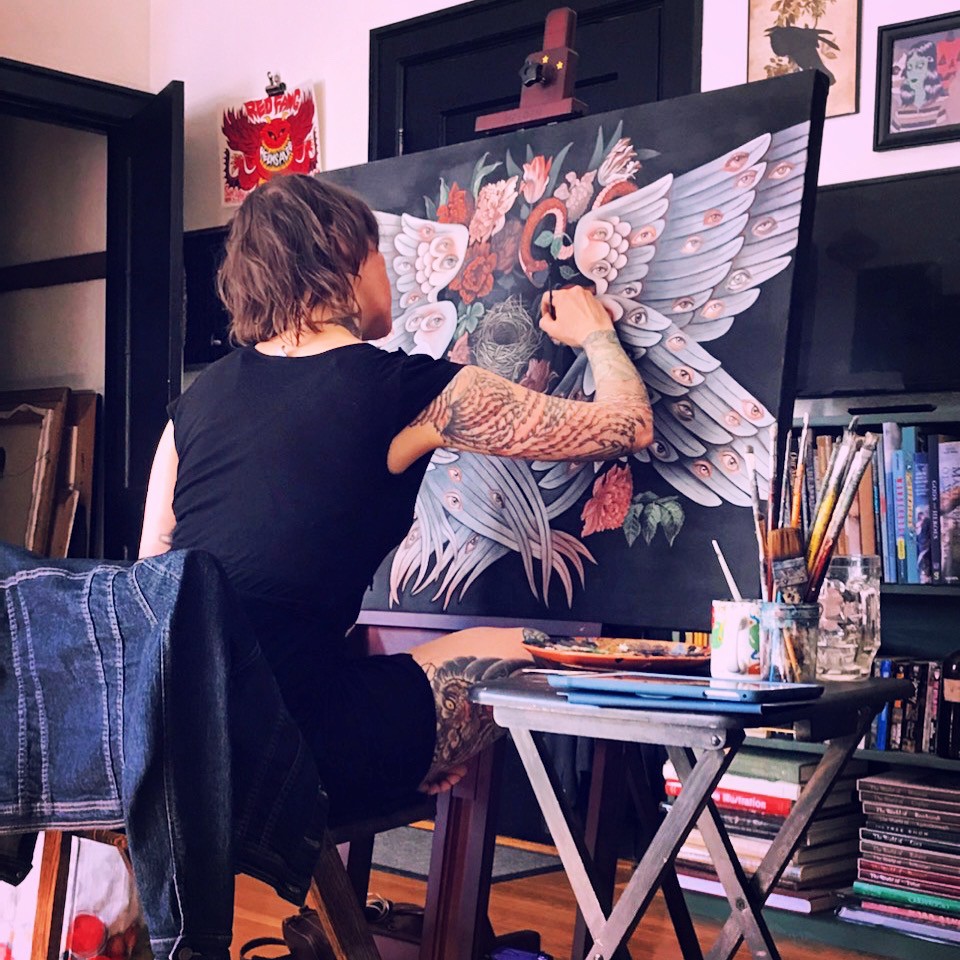We’re excited to introduce you to the always interesting and insightful Erica Peebus. We hope you’ll enjoy our conversation with Erica below.
Erica, looking forward to hearing all of your stories today. When did you first know you wanted to pursue a creative/artistic path professionally?
I knew from the very beginning that I wanted to be an artist but I didn’t think it could be possible to make a living as a painter until I met a few people who were actually doing it. I grew up in my father’s shadow. He was an abstract painter and a very serious artist who was never able to make a living from painting alone. He carried on odd jobs to make ends meet but ultimately wasn’t able to support a family from his income. It was hard to see him struggle with his desire to become a professional artist and his inability to provide for our family. Eventually he set out on his own to realize his dreams but never quite saw them through. You can imagine the disbelief I felt as an artist myself that this could ever be something I could create a career out of. Nevertheless, I went to school for art, getting a bachelors degree at Pacific Northwest College of Art (in Portland, Oregon) and it taught me a lot of technical skills but still I didn’t quite believe painting could ever pay the bills. But I continued to paint while also working as a server and bartender. It wasn’t until Covid that I actually took the leap to working full time as a painter. It was not an easy transition and I had no idea how much work actually went into making art a full time job. One must wear a lot of hats to make it work. Painting is the fun part but learning new skills never ends in this field. From social media and content creation, to photography and photoshop. Putting in equal time tending to business duties as you put in creating new work is a hard balance to pull off but necessary for any working artist. It wasn’t until I met my partner, Who is a total powerhouse and a full-time painter himself that I really began to understand just how much work goes into the job of an artist. I had the romantic notion that someone would come along and discover my work and I would be whisked away, floating from gallery to gallery all around the world, becoming rich and famous over night. But the reality is, it’s hard work, there is a lot of rejection and self-doubt one must face and money is not always flowing in. For me, it’s still an ongoing struggle but at the end of the day, I’m proud of the work I do. Im extremely passionate about painting and even if I have to get the odd job now and again to make ends meet, I will never quit being an artist and I’ve found that this persistence is the greatest skill one can have when pursuing their dreams.
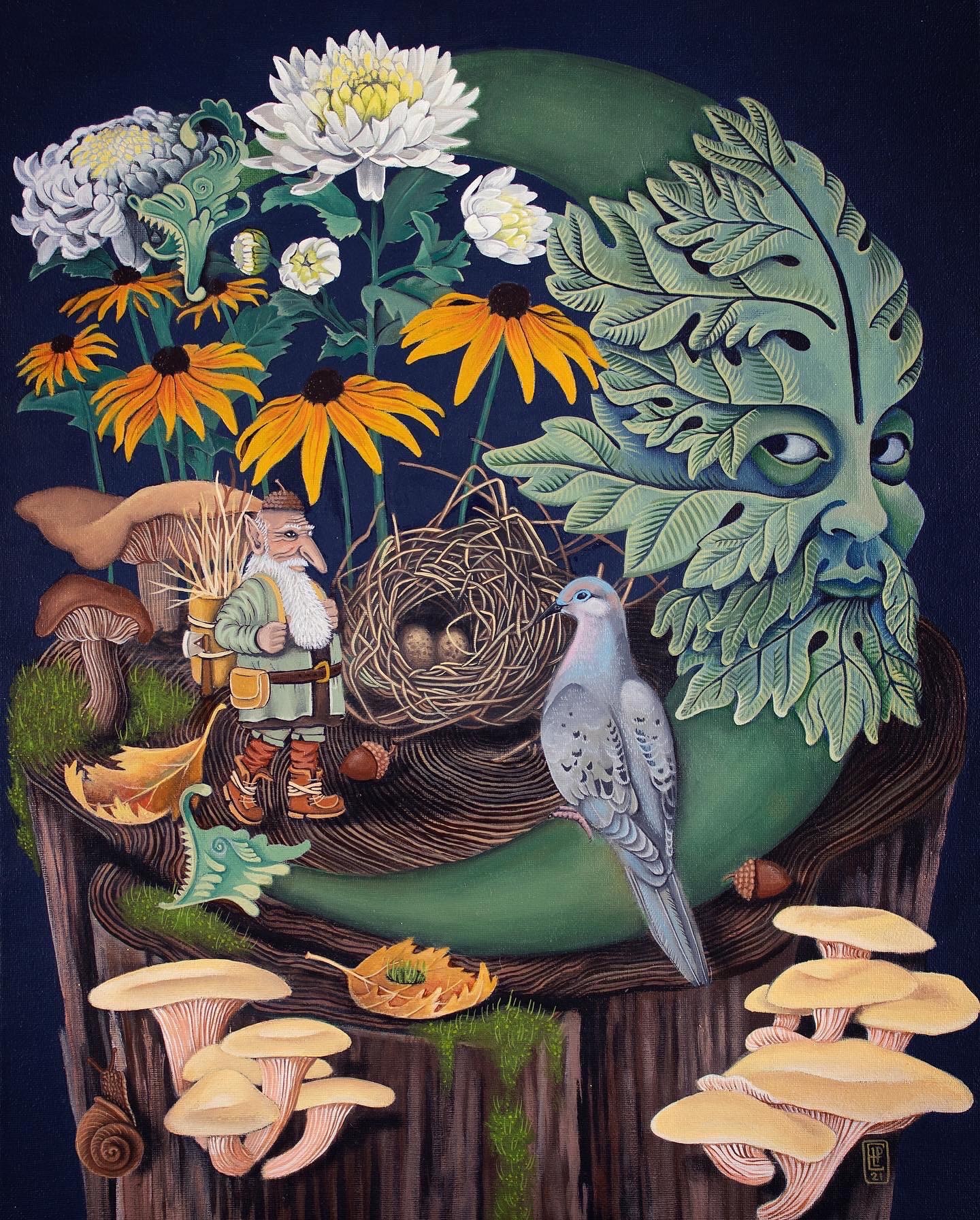
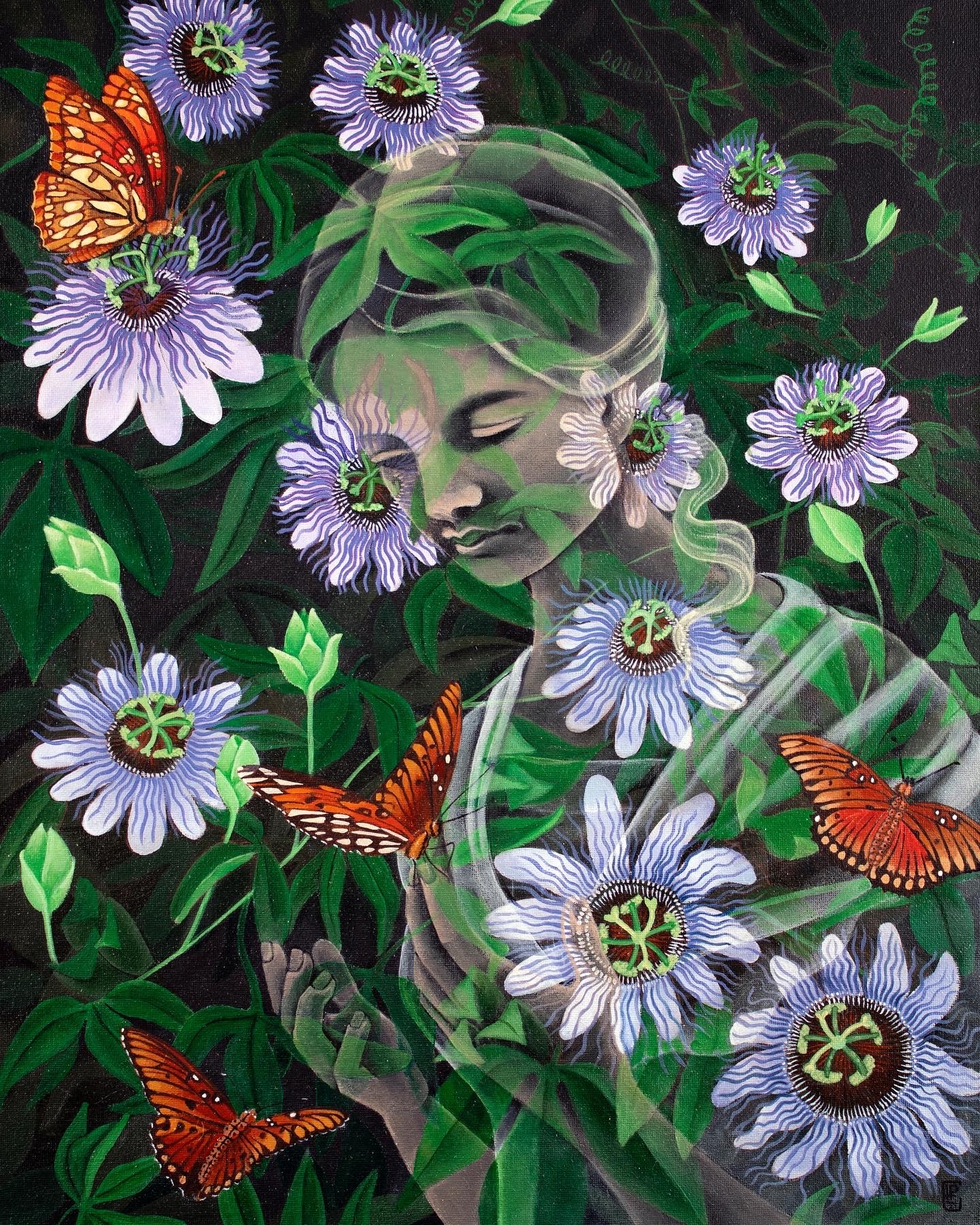

Erica, before we move on to more of these sorts of questions, can you take some time to bring our readers up to speed on you and what you do?
I am a traditional painter working in acrylics. My work is an act of reverence for the natural world. A self proclaimed nature worshipper, I use painting as a tool to discover and explore humankind’s relationship to plants. Painting is a great learning tool and through my painting and writing, I share what I learn with my followers. In this way, my work has an educational quality. Reminiscent of scientific illustration, however I attempt to paint the spirit of a plant more so than simply recording it’s appearance. I often describe my work as both dark and whimsical, it has a surrealistic quality. I’m a very spiritual person and that definitely comes through on the canvas. I am inspired by folklore and mythology and often revisit these old stories through my work. I sell my paintings, prints, and stickers directly to collectors via my website, www.ericapeebusart.com and share my work and the stories behind it on Instagram.
What do you find most rewarding about being a creative?
The most rewarding aspect of being an artist, for me, is the way in which it opens my sense of vision to a whole new way of perceiving the world. Seeing through an artists eyes is a more active way of taking in one’s environment, where you really become aware of the small nuances in shape, light, and contrast. If you see something that really turns you on, you examine what it is that makes something beautiful. In this way, your interpretation of the visual world becomes a very valuable aspect of your practice and your entire life is touched by art as you begin to find beauty in the most unexpected places.


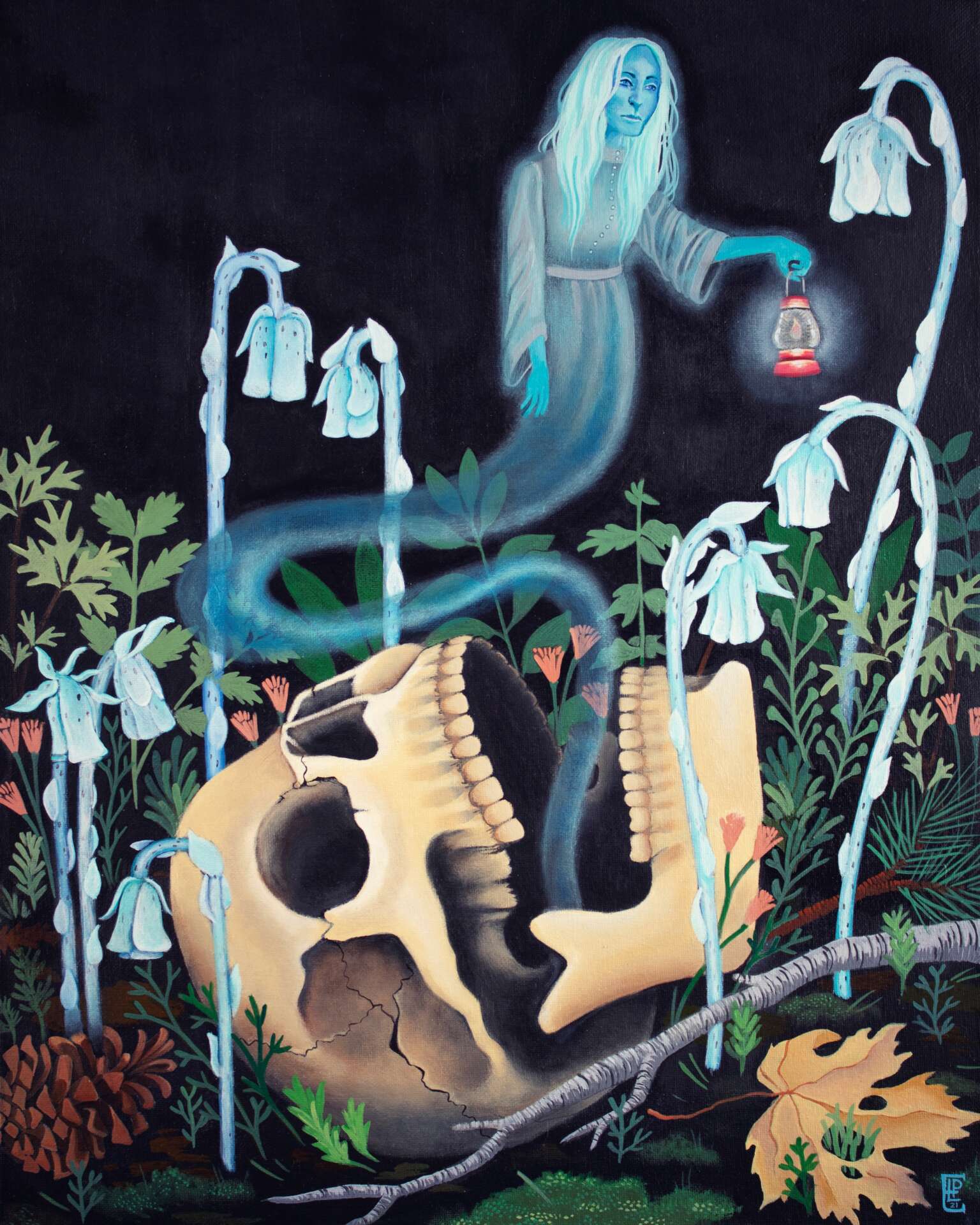

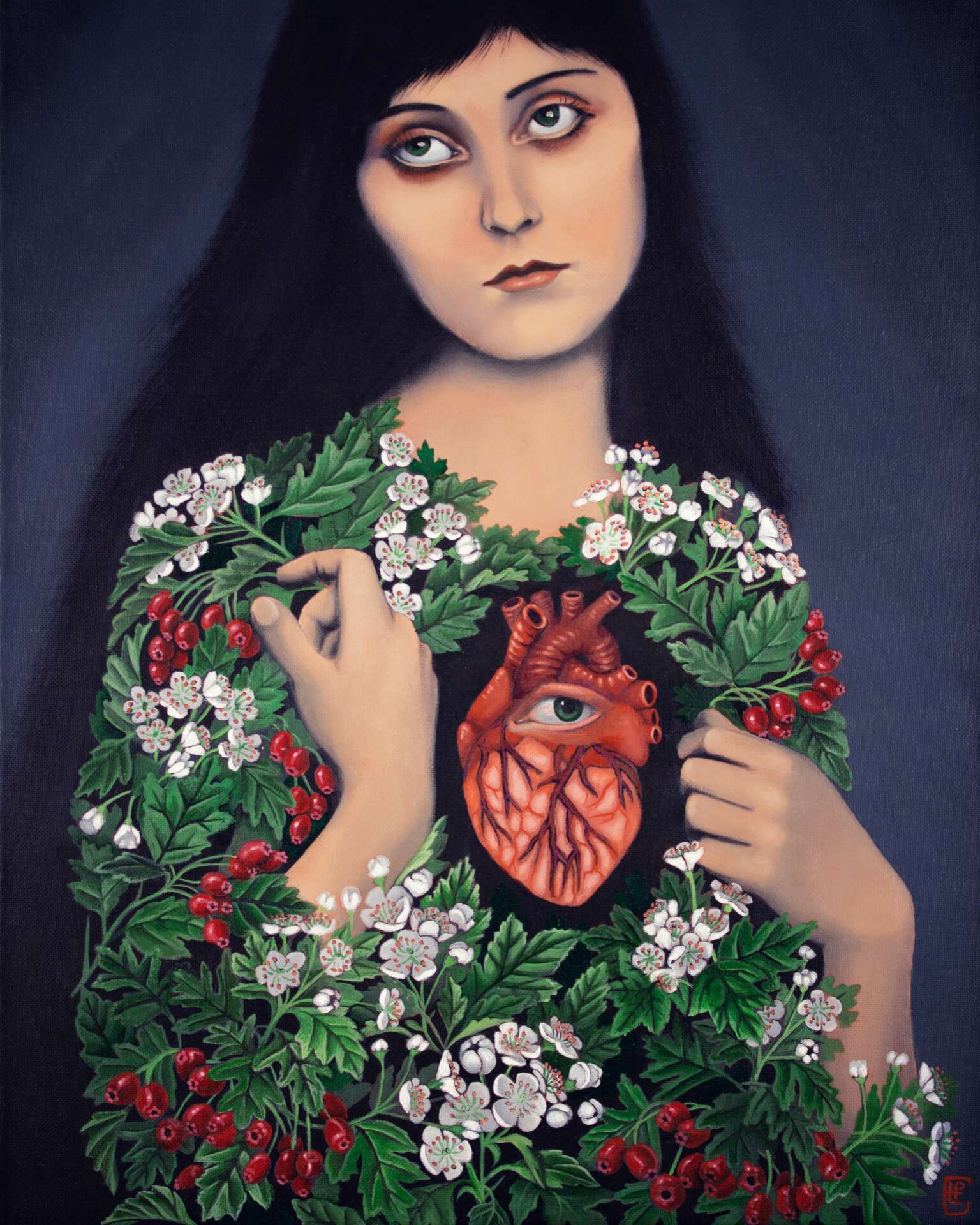
How can we best help foster a strong, supportive environment for artists and creatives?
Society can best support artists by getting involved in the art world. Buying art is always going to be the most direct way to support the artists you admire but there are lots of other ways to show your admiration and support, that don’t involve spending money. Going to art shows, and galleries, even if you’re not buying work is a way to keep showing interest in these spaces. Also, reaching out directly to artists through their websites and emails and especially through their social media. Liking and commenting on an artists images not only keeps them in the algorithms sights but also lends encouragement directly to the artist in a space that can be extremely isolating. Sharing their work with others is another great way to hello an artist extend their reach.
Contact Info:
- Website: www.ericapeebusart.com
- Instagram: www.Instagram.com/sweet_peebus_art
- Facebook: Sweet peebus art


